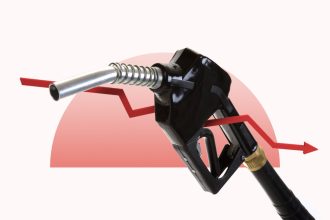Key takeaways
- Nonstandard car insurance is insurance for drivers who present a greater risk to insurers, making it more expensive than standard insurance.
- New drivers, those with poor driving history, a lapse in coverage or a foreign driver’s license could be considered high-risk drivers.
- Shopping around with multiple carriers may help high-risk drivers get the best rates on nonstandard car insurance.
Insurers group drivers into different risk categories to determine policy eligibility and pricing. Standard insurance is what most drivers qualify for, while nonstandard insurance is usually reserved for high-risk drivers who have let their insurance lapse or may require an SR-22 (a certificate that proves you carry the minimum amount of insurance required in your state) due to risky driving behaviors. Here’s what you need to know about standard vs. nonstandard insurance, including who falls into the high-risk category, how the two policy types differ and what nonstandard insurance might cost you.
How is nonstandard car insurance different from standard insurance?
Nonstandard insurance was created for high-risk drivers unable to obtain a standard car insurance policy. But who is considered high risk? Auto insurers typically qualify the following drivers as nonstandard or high risk:
- New drivers: Young drivers and inexperienced drivers are often considered riskier to insure because they have a greater likelihood of being involved in accidents.
- Foreign drivers: A visitor or temporary resident may not be eligible for standard auto insurance because they have no driving history in the United States.
- Drivers with a coverage lapse: Failing to maintain continuous auto insurance makes drivers riskier to insure. Even a single day without coverage could put you in this risk category.
- Drivers with a recent history of violations or at-fault accidents: Speeding tickets, car accidents or a DUI conviction could flag a driver as nonstandard. The severity and frequency of the incidents, plus the insurance company’s comfort with these types of risk, can affect whether drivers with incidents on their record are eligible for standard car insurance.
- Drivers required to carry an SR-22: Drivers who have had their license suspended or revoked may have to file an SR-22 certificate as proof they are carrying the required minimum amount of auto insurance coverage needed in their state.
The scenarios above could all potentially cause an auto insurer to refuse to offer standard auto insurance coverage—or to offer standard coverage at a much higher rate.
What type of drivers might need nonstandard auto insurance?
The biggest differences between standard vs. nonstandard auto insurance are cost and choice. Nonstandard car insurance typically includes the same types of coverage as standard auto insurance, though you may not have as many add-ons available, such as new car replacement or gap insurance. Nonstandard insurance is also usually more expensive and may not be available from all insurance companies.
When it comes to shopping and purchasing car insurance, the process for nonstandard policies looks very similar to the standard process. You’ll still want to shop around and compare car insurance rates from various providers — including top-rated national carriers who offer both standard and nonstandard policies. If you need an SR-22 certificate, make sure the carrier offers this service, as they must file that paperwork with the state on your behalf.
How much does nonstandard car insurance cost?
Nonstandard auto insurance costs more, on average, than standard car insurance, but the exact price will still depend on the rating factors in each individual driver’s profile. Insurance carriers use multiple factors to determine how much you pay for car insurance.
For example, insurance companies look at your driving record and credit history (in most states) to determine your risk of filing claims. Depending on your location, they may also factor in your ZIP code, your age, your gender and your marital status when determining whether your level of risk fits with their standard coverage offerings.
As far as the carrier you choose, the same level of coverage could cost more or less. Some nonstandard auto insurance companies specialize in high-risk car insurance, which may help you save on premiums. Insurers also rate incidents differently, such as at-fault accidents and speeding tickets, using proprietary algorithms to calculate premiums, meaning rates could be significantly cheaper from one company to the next.
The table below shows average full coverage premiums for drivers who may qualify for nonstandard coverage. Note that these rates may be based on quotes from standard insurance carriers as well as nonstandard carriers.
| Driver profile | Average annual full coverage premium |
|---|---|
| Clean record | $2,458 |
| Coverage lapse | $2,705 |
| 18-year-old (standalone policy) | $6,687 |
| DUI conviction | $4,713 |
Frequently asked questions
Why we ask for feedback
Your feedback helps us improve our content and services. It takes less than a minute to
complete.
Your responses are anonymous and will only be used for improving our website.
Help us improve our content
Read the full article here














